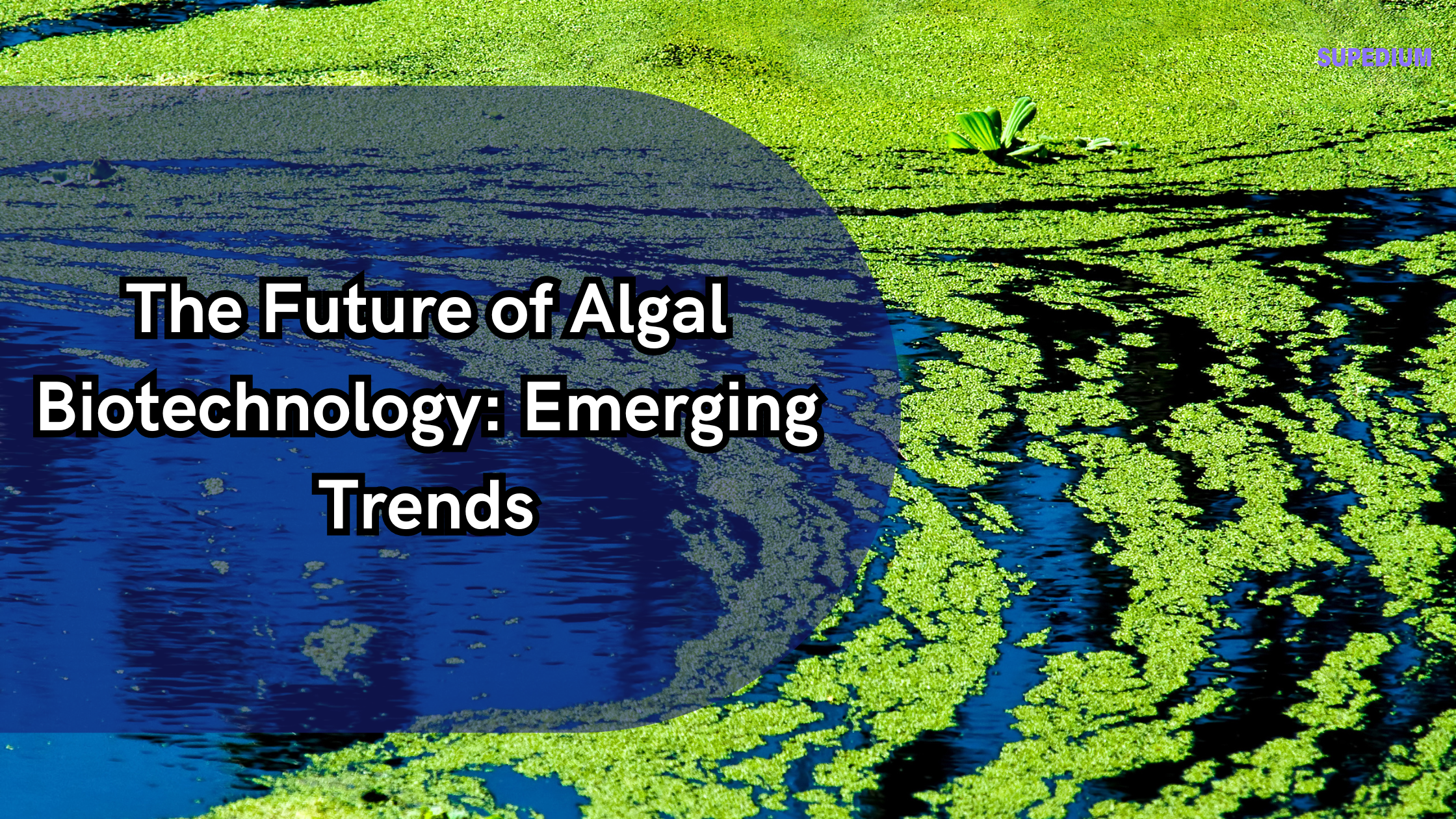Table of Contents
![]()
I. Introduction
Algal biotechnology refers to the use of algae in technological and industrial applications, harnessing their unique biological properties for various purposes. This field stands at the intersection of environmental science and industrial innovation, offering promising solutions to some of the most pressing challenges of our time. The significance of algal biotechnology extends beyond its immediate applications; it plays a crucial role in sustainability, environmental management, and economic development.
II. Current State of Algal Biotechnology
A. Historical Development
The use of algae dates back centuries, but its role in biotechnology began to gain recognition in the latter half of the 20th century. Initial research focused on the potential of algae as a source of food and feed. However, advancements in science and technology have significantly expanded its applications. Notable milestones include the development of algal biofuels and the discovery of algae’s potential in pharmaceutical production.
B. Current Applications
Today, algal biotechnology encompasses a diverse range of applications:
- Biofuels: Algae are a promising source of biofuels such as biodiesel and bioethanol. Their high lipid content and rapid growth rates make them an attractive alternative to traditional fossil fuels.
- Pharmaceuticals and Nutraceuticals: Algae produce a variety of bioactive compounds with medicinal properties. Examples include omega-3 fatty acids and antioxidants used in dietary supplements and pharmaceutical formulations.
- Food and Feed Additives: Algal products are increasingly used as additives in food and animal feed, providing essential nutrients and enhancing health benefits.
- Environmental Remediation: Algae can be used to treat wastewater, remove pollutants, and mitigate environmental damage through processes like bioremediation and carbon sequestration.
III. Emerging Trends in Algal Biotechnology
A. Advanced Genetic Engineering
Recent advances in genetic engineering are poised to revolutionize algal biotechnology. Techniques such as CRISPR and other genome-editing tools are enabling precise modifications to algal genomes. This allows for the development of strains with enhanced productivity, resilience, and the ability to produce high-value compounds.
B. Enhanced Strain Development
Metabolic engineering and high-throughput screening methods are enhancing the development of algal strains. Researchers are optimizing metabolic pathways to increase yields of desired products, such as biofuels and pharmaceuticals. Additionally, advancements in strain development are improving algal productivity and stress tolerance.
C. Novel Cultivation Techniques
Cultivation techniques for algae are evolving, with a focus on efficiency and sustainability:
- Photobioreactors vs. Open Ponds: Photobioreactors offer controlled environments for algal growth, potentially leading to higher yields and reduced contamination compared to traditional open ponds.
- Indoor and Vertical Farming Systems: These methods utilize space more efficiently and can be integrated into urban environments, enhancing the scalability and accessibility of algal cultivation.
- Space and Extreme Environment Cultivation: Research into growing algae in space or extreme environments could open new avenues for space exploration and resource utilization.
D. Integration with Other Technologies
- Artificial Intelligence and Machine Learning: AI and machine learning are being applied to optimize algal growth conditions, predict yields, and streamline production processes. These technologies enable more precise control and efficiency in algal biotechnology.
- Internet of Things (IoT) and Automation: IoT devices and automated systems are improving the monitoring and management of algal cultivation, enhancing productivity and reducing labor costs.
E. Circular Economy and Waste Utilization
Algae are increasingly being utilized in circular economy models:
- Recycling and Waste Management: Algae can convert waste products into valuable resources, such as biofuels and animal feed, contributing to waste reduction and resource efficiency.
- Agricultural By-products and Co-products: Algae can be integrated into agricultural systems to utilize by-products and co-products, enhancing sustainability and reducing environmental impact.
IV. Economic and Market Trends
A. Investment and Funding Opportunities
Algal biotechnology is attracting significant investment from both government and private sectors. Venture capital and startup ecosystems are also playing a crucial role in funding innovative projects and technologies.
B. Market Growth and Forecasts
The algal biotechnology market is experiencing robust growth, driven by increasing demand for sustainable solutions and bioproducts. Market analyses project substantial expansion, with key players and industry dynamics shaping the future of this sector.
C. Cost Reduction Strategies
Reducing costs is essential for the widespread adoption of algal technologies. Strategies include achieving economies of scale, improving production efficiency, and innovating in processing techniques to make algal products more competitive with traditional alternatives.
V. Environmental and Societal Impacts
A. Environmental Benefits
Algal biotechnology offers significant environmental benefits:
- Carbon Capture and Climate Change Mitigation: Algae absorb carbon dioxide during photosynthesis, helping to mitigate climate change and reduce greenhouse gas emissions.
- Reduction of Dependence on Fossil Fuels: Algal biofuels present a sustainable alternative to fossil fuels, contributing to energy security and environmental protection.
B. Societal Implications
The development of algal biotechnology has positive societal impacts, including job creation, economic development, and enhanced public health through the availability of high-quality food and pharmaceuticals.
VI. Challenges and Limitations
A. Technical Challenges
- Efficiency and Scalability Issues: Scaling up algal cultivation and processing to commercial levels presents technical challenges, including optimizing growth conditions and managing large-scale operations.
- Technical Barriers: Genetic modification and strain development require advanced technologies and expertise, which may be limiting factors in some regions.
B. Economic and Market Barriers
- High Initial Investment and Operational Costs: The initial investment for algal biotechnology projects can be substantial, and operational costs can impact the economic viability of some applications.
- Market Competition and Price Volatility: Competition from other technologies and fluctuations in market prices can affect the profitability and stability of algal products.
C. Regulatory and Policy Issues
- Regulatory Frameworks: Developing and navigating regulatory frameworks for genetically modified algae and other biotechnological innovations can be complex and varies by region.
- Policy Support and Incentives: Effective policies and incentives are crucial for supporting the growth and commercialization of algal biotechnology.
VII. Future Outlook and Opportunities
A. Innovations on the Horizon
The future of algal biotechnology holds exciting possibilities with ongoing research and innovations. Emerging technologies and interdisciplinary collaborations are likely to drive significant advancements, opening new opportunities for algal applications.
B. Strategic Recommendations
- Policy Recommendations: Governments should create supportive policies and incentives to foster the growth of algal biotechnology, including funding research and facilitating regulatory processes.
- Industry Strategies: Industry stakeholders should focus on technological innovation, cost reduction, and market development to capitalize on the opportunities presented by algal biotechnology.
VIII. Conclusion
Algal biotechnology is on the brink of transformative change, with emerging trends poised to drive innovation and growth. The continued development of advanced technologies, novel cultivation methods, and integrated systems will shape the future of this dynamic field. As we move forward, collaborative efforts among researchers, policymakers, and industry leaders will be essential to realizing the full potential of algal biotechnology and addressing global challenges.
Share This





Be the first to comment